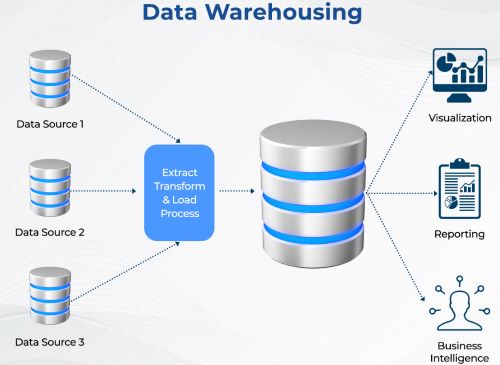

Cloud-based data warehousing has revolutionized the way organizations manage and analyze their data. The flexibility and scalability of cloud solutions offer unparalleled advantages, enabling businesses to process vast amounts of information quickly and efficiently. However, with these benefits comes the challenge of managing and controlling cloud costs, which can quickly escalate if not carefully monitored. It is crucial for organizations to adopt effective cost-management strategies to ensure they are maximizing their cloud investments without overspending.
This post explores various strategies to manage and control cloud costs in data warehousing. It also delves into how Snowflake resources monitoring can help identify cost-saving opportunities and optimize resource usage, providing a comprehensive approach to cloud cost management. It will also discuss methods such as resource optimization, leveraging cost monitoring tools, and implementing best practices for efficient cloud usage.
Optimize Resource Utilization
One of the most effective ways to control cloud costs is by optimizing resource utilization. This involves right-sizing resources to match the workload requirements and avoiding over-provisioning, which leads to unnecessary expenses. By regularly reviewing and adjusting resource allocations, organizations can ensure they are not paying for unused or underutilized resources. Implementing auto-scaling capabilities can further enhance resource efficiency, allowing systems to adjust automatically based on real-time demand.
Implement Cost Monitoring and Analysis Tools
Cost monitoring and analysis tools are essential for managing cloud expenses effectively. These tools provide visibility into cloud usage patterns and spending, enabling organizations to identify areas where costs can be reduced. Businesses can proactively manage their cloud expenditures and prevent cost overruns by setting up alerts and budgets. Detailed cost analysis reports help in understanding which services or applications are driving costs, allowing for more informed decision-making.
Leverage Reserved Instances and Savings Plans
Another strategy to control cloud costs is by leveraging reserved instances and savings plans. These pricing models offer significant discounts compared to on-demand pricing for long-term commitments. By analyzing usage patterns and predicting future needs, organizations can make informed decisions about purchasing reserved instances or committing to savings plans. This approach provides cost predictability and reduces the overall expenditure on cloud resources.
Utilize Spot Instances
Spot instances are another cost-saving option for non-critical workloads. These instances are offered at a significantly lower cost compared to on-demand instances since they use excess cloud capacity. Although spot instances can be terminated with little notice, they are perfect for tasks that can handle interruptions, like batch processing, data analysis, and development/testing environments. By incorporating spot instances into their cloud strategy, organizations can significantly reduce their compute costs.
Adopt Data Lifecycle Management
Effective data lifecycle management is crucial for controlling storage costs in cloud data warehousing. This involves implementing policies for data retention, archiving, and deletion based on the value and usage of the data. Organizations can optimize their storage expenses by categorizing data into different tiers and moving infrequently accessed data to cheaper storage options. Regularly reviewing and cleaning up obsolete or redundant data helps in maintaining an efficient and cost-effective data warehousing environment. Additionally, for businesses looking to optimize their document management and further reduce physical storage costs, working with a document scanning company in Oakland can streamline the transition to more efficient digital workflows.
Snowflake Resource Monitoring for Cost Optimization
Snowflake, a popular cloud data warehousing solution, offers robust resource monitoring capabilities that can help identify cost-saving opportunities. By utilizing Snowflake resources monitoring tools, organizations can gain insights into resource usage, query performance, and overall system efficiency. These insights enable businesses to make data-driven decisions about resource allocation, identify underutilized resources, and optimize query performance to reduce costs. Snowflake’s features, such as auto-suspend and auto-resume, ensure that compute resources are only used when necessary, further contributing to cost savings. Managing cloud costs in data warehousing requires a strategic approach that combines resource optimization, cost monitoring, and efficient usage practices. By implementing these strategies, organizations can ensure they are maximizing the value of their cloud investments while minimizing unnecessary expenses.


